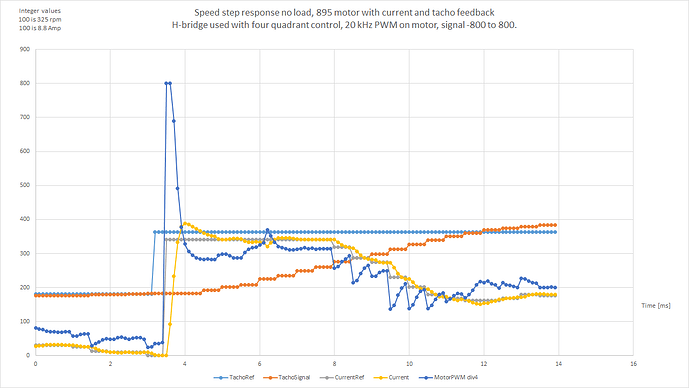Thanks. I made a bit more detailed video about this test bench, if you like to see more. Its primary use have been to test universal motors for sewing machines:
I think the primary focus for a motor test bench is to be able to measure torque and speed and measure the input voltage, frequency, current and power to the motor at test in a steady state condition. Measurement of some dynamics have not been the primary focus. I think it will be difficult to create a specific defined measurable load change with a cam. The final use with a sewing machine will be the ultimate test to evaluate for load variations.
I have tested quite many universal motors for household sewing machines with this test set up, and variations are quite substantial and not that much related to marked values on motor. Universal motors are still quite cheep motors and the control electronics is cheep. They are still used in many applications. Used with proper gearing to a sewing machine and perhaps with a speed feed-back signal, these motor are still a decent and cheap alternative for a sewing machine. The test you see here is using an universal motor with altered gearing and tachometer feed-back:
https://youtu.be/uTB8DnyYAlA
I am not using drones, but I have seen several videos about the test set-up to test drone motors, and they rely on measuring the force that a propeller provide. I think they normally measure input voltage and current to the ESC (not to motor). It is an easy test set-up, but in my view, it is a far too simple approach to make proper evaluations of motors and propellers for that sake. You got so many other factors that can alter and influence test results like:
Variations in air density due to air temperature and air pressure.
Variations in actual propeller due to production variations of propellers.
The propellers got no specific data regarding torque, speed and thrust.
Variations in ESC performance.
No detailed measurement of AC current, voltage, power and frequency to the motor under test.
Motor condition like estimated temperature of the copper windings.
Too me it seems, that the drone users create a lot of problems for themselves by not separating performance of propellers to performance of motors. I know it is the combined effort that matters, but in design and evaluations I think that a separated approach would be beneficial.
Brushed DC motors are cheap, because they are produced in large numbers for battery driven tools. Furthermore, DC motors have been used a century for accurate servo control and they are very easy to control and their performance are very predictable. But they do have brushes, that may need to be replaced after some time of use. So I just like to keep things simple and cheep.
I have noticed the newer methods with FOC and BLDC motors with use of stronger magnets, and I have seen some videos of these drivers with remarkable low speed performance. I guess, that these motor drives will take over a larger part of applications, that use small motors. The older BLDC design with digital hall elements for commutations got in my view no significant difference to brushed DC motors, and they may actually be worse, because 6 commutations each electrical cycle is a not that much, and cause significant torque variations.
The FOC methods are still new to me, and I just like to study them a bit more, and perhaps make a drive for evaluation. That is why I started this thread here, and I am glad that others got a similar interest.
I am just lost here by the terms, so I like a bit of help to understand. Is G0 some versions of the STM32 processors? What is ADC in this context?









